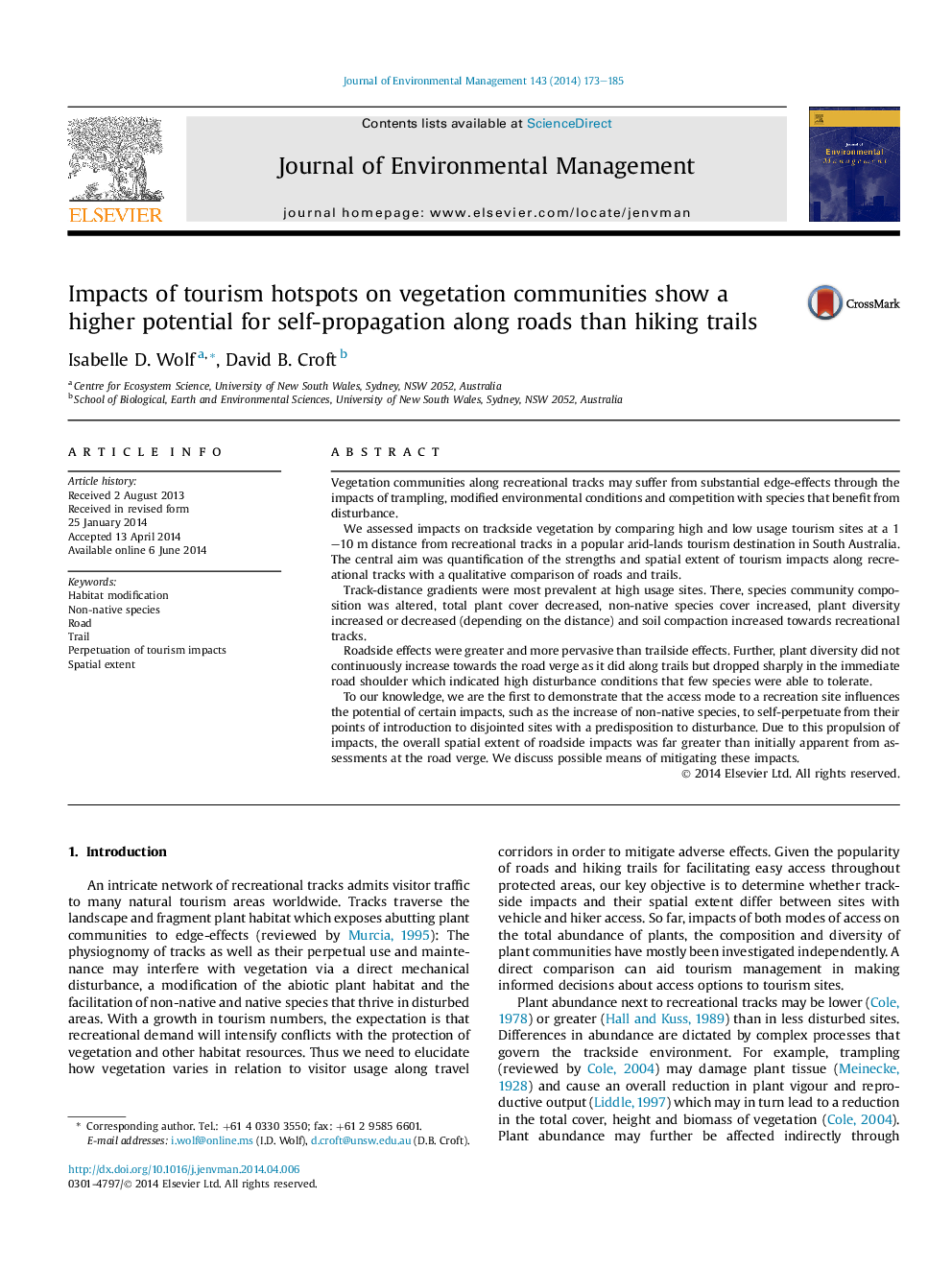| کد مقاله | کد نشریه | سال انتشار | مقاله انگلیسی | نسخه تمام متن |
|---|---|---|---|---|
| 1055766 | 1485269 | 2014 | 13 صفحه PDF | دانلود رایگان |
• This study presents edge-effects of recreational access roads and hiking tracks.
• Tourism usage intensity determined track-distance gradients.
• Access mode affected the type, magnitude and spatial scale of tourism-induced impacts.
• Introduced non-native species self-propagated from roads to other disturbed sites.
• This increased the spatial extent of roadside impacts from a narrow to a wide effect zone.
Vegetation communities along recreational tracks may suffer from substantial edge-effects through the impacts of trampling, modified environmental conditions and competition with species that benefit from disturbance.We assessed impacts on trackside vegetation by comparing high and low usage tourism sites at a 1–10 m distance from recreational tracks in a popular arid-lands tourism destination in South Australia. The central aim was quantification of the strengths and spatial extent of tourism impacts along recreational tracks with a qualitative comparison of roads and trails.Track-distance gradients were most prevalent at high usage sites. There, species community composition was altered, total plant cover decreased, non-native species cover increased, plant diversity increased or decreased (depending on the distance) and soil compaction increased towards recreational tracks.Roadside effects were greater and more pervasive than trailside effects. Further, plant diversity did not continuously increase towards the road verge as it did along trails but dropped sharply in the immediate road shoulder which indicated high disturbance conditions that few species were able to tolerate.To our knowledge, we are the first to demonstrate that the access mode to a recreation site influences the potential of certain impacts, such as the increase of non-native species, to self-perpetuate from their points of introduction to disjointed sites with a predisposition to disturbance. Due to this propulsion of impacts, the overall spatial extent of roadside impacts was far greater than initially apparent from assessments at the road verge. We discuss possible means of mitigating these impacts.
Journal: Journal of Environmental Management - Volume 143, 1 October 2014, Pages 173–185
